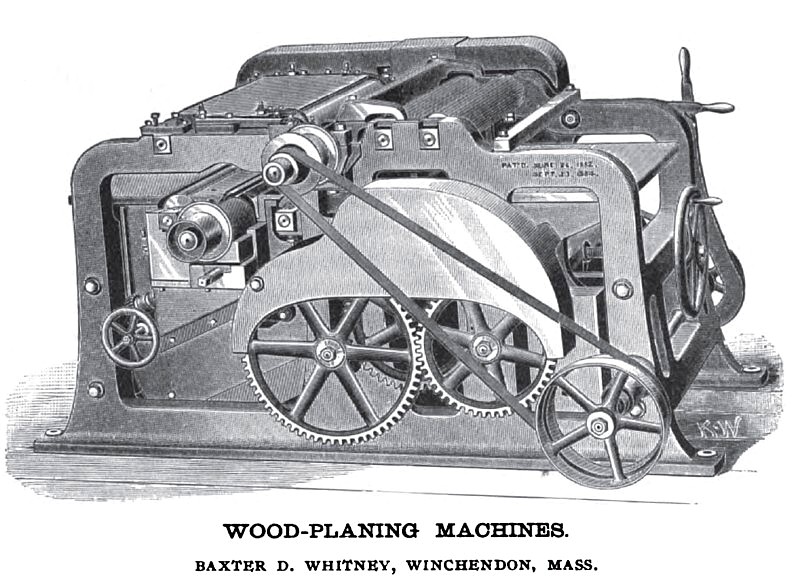|
Title: |
1895 Article-Baxter D. Whitney, Wood Planing Machine |
|
Source: |
Industry Magazine, May 1895, pg. 284 |
|
Insert Date: |
12/12/2012 8:55:29 PM |
It is a common opinion, and one supported by the circumstances, that wood cannot be planed smooth by rotary cutters, but is not the fact. It all depends on the method of planing, or the character of the machine.
Some time ago we sent for some examples of planing done on machines similar to the one shown above, and were informed by nearly everyone who examined the work that it was "never done on a cylinder planing machine." These examples, that are now at the Union Iron Works, if not lost, consisted of various kinds of hard and soft wood, planed in some cases to "one sixteenth of an inch thick," cut down from stuff half an inch thick, the surfaces polished and ready to receive varnish. Bird's-eye maple, crotch wood, and every kind of irregular grain was included, showing the possibilities of cylinder planing on a machine made to finish surfaces.
One of these machines, to plane' one side, was taken to the first Paris Exhibition, thirty-five years ago, and with other ingenious machines by the same maker to finish wood surfaces by scraping, was one of the most creditable exhibits sent from America. The performance of these machines was a matter of astonishment to not only the jury but also even to most people from this country. A gold medal was awarded to Mr. Whitney.
The attainment of smooth work in planing is not as is commonly supposed due to great rigidity and weight. While these things may be among the causes or conditions, they are not principal or essential. The main thing is a high speed of the cutting edges, or a slow feed, which is in a sense the same thing. Absolute fit and consequent stability of the cylinder journals, and an immovable abutment opposite the "cut," also good cutters or knives with a proper angle or bevel. In the machine illustrated there is a careful attention given to all these things. The beds rest on wedges or inclined planes that slide beneath, so that no yield or vibration is possible.
The present notice of these machines grows out of a communication sent some time ago to Mr. Whitney suggesting that he make a small machine for re-planing, or smoothing stuff for painted work, such as is hand-planed and sand-papered on this Coast, a kind of by-machine that could be called into use for fine work, and this suggestion arose from finding in an estimate for ceiling a room an item for hand-planing and sand-papering that exceeded the cost of the planing and matching.
All the ceiling of this room could be run through a machine like the above in ten minutes, and would be more perfect than if hand planed, so also the whole of the painted surfaces. Such a machine is not suited for thicknessing or rough work, at least cannot be used at the same time for that and fine work, but would be a paying investment in any mill for second planing surfaces that are to be painted or varnished. |
|
 1895 Baxter D. Whitney, Wood Planing Machine
1895 Baxter D. Whitney, Wood Planing Machine
|
|